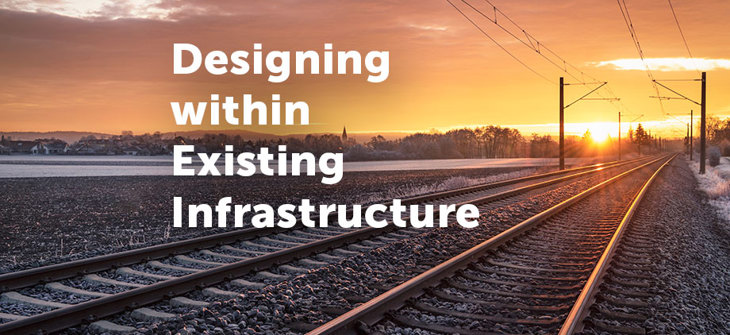
Designing within Existing Infrastructure Constraints
As a kid, I always wanted to dig holes in the ground. My mom wouldn’t let me…mostly because it would make our yard look ugly, but perhaps, somewhere in the back of my mom’s mind she knew I was supposed to call 811 and verify if there were any utility lines in our yard. Now that I’m older and work for a company that manufactures and designs culverts, from time to time I get people asking me: “There’s a sanitary sewer line underneath here, how am I supposed to put a culvert there?” Now my mom’s voice inside my head is wanting me to say: “just don’t do it.” That’d be the easy answer and allow me to absolve myself of any responsibility. But then another voice inside my head is screaming: “You work for a manufacturer that designs culverts, give ‘em a solution!” So, I’m going to level with you. Here’s how I tackle infrastructure constraints:
Common Type of Infrastructure Constraints
The most common type of infrastructure constraint I come across is an existing sanitary sewer line running perpendicular to a proposed culvert. How is this most often addressed? Simply reducing the rise of the proposed culvert will resolve this situation. But let’s say you have a minimum clearance requirement and you cannot lower the proposed culvert any further to avoid the existing utility line, what do you do? It’s not the prettiest, but we can accommodate our structures to have existing utilities cutting through, provided there is necessary reinforcement. There will certainly be a hydraulic impact in these scenarios, but if the existing sanitary line absolutely cannot be moved and the water in the existing channel is not going to be impacted, you don’t have many other choices I suppose. (I said I was going to level with you, didn’t I?)
Other types of infrastructure constraints: working within tight property spaces. Some hot shot had a grand idea of constructing a commercial development with a small amount of space between the building and the property line. Oh, and by the way, they want to have a detention system to store rainwater run off between the building and the property line, is that going to be a problem with the limited amount of space? Well, that depends, the structural integrity of our metal pipes is maintained by having compacted backfill placed around our pipes. If you try to reduce the amount of recommended compacted fill around the pipe, you could have a problem. Fortunately, in tight spaces, we can place flowable fill around the pipe which usually ensures the structural integrity is maintained while reducing the required trench width when you are jammed up against a property line.
I could write a blog the length of Moby Dick that encompasses every possible infrastructure constraint based on how you want to define “infrastructure”. Got an existing rail road? Most often, that railroad ain’t going anywhere. We can certainly accommodate our design to ensure the railroad can stay in place. These cases are pretty unique, and I don’t have much of a snappy reply that is all encompassing.
Bottom line: If existing infrastructure is in the way of your design of a culvert or detention system, do not assume it’s a foregone possibility. We can change the size of the proposed pipe, we can reinforce the pipe if we have to cut it, or we can change the backfill requirements to allow you to work in a tighter space. So, after you call 811, give us a call.
